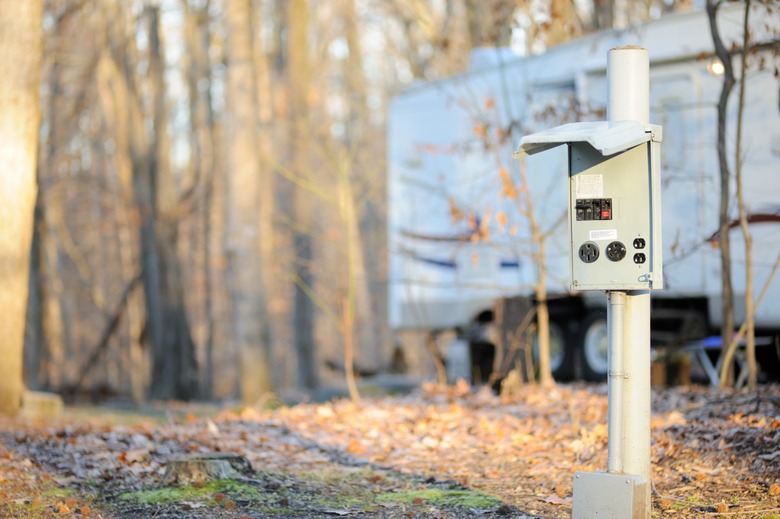How Do I Wire A 50 Amp 220 Plug?
A 220-volt, 50-amp plug is for RVs and really large, power-hungry appliances such as ranges and furnaces. A 220-volt circuit, which you could just as easily call a 250-, 240- or 230-volt circuit, has two hot wires. Each is connected to one of the hot bus bars in the panel, and since the voltage between the bus bars is 220 volts, that's the voltage between the wires.
Because the two hot wires form a closed loop, a 220-volt circuit doesn't need a neutral, but 110-volt devices on an appliance or in an RV do need a neutral because they draw power from only one of the hot wires, and the electricity needs a return path. That means when you're wiring a stove outlet or an RV receptacle, you should use three-conductor cable, which has two hot wires: a neutral and a ground. The ground is a code requirement, but it hasn't always been.
The code used to allow the neutral wire to act as a ground, so older 50-amp receptacles may have only three prongs, and they're permitted as long as they're grandfathered in. If you're trying to plug a new stove into an old outlet, you may have to replace the existing four-prong plug with a three-prong plug. The code permits this, and it isn't that difficult to do.
Wiring a 220 Plug End
Wiring a 220 Plug End
Most appliance plugs come preinstalled on a power cord, and all you have to do is connect the cord to the terminals inside the appliance. In the rare case when you actually have to install a plug on a cord, it's important to make sure you have the right cord. You need six-gauge wires for a 50-amp circuit. That's beefy wire and it's difficult, if not impossible, to wrap it around a terminal screw. Buy ring lugs that you can crimp onto the ends of the wires to make connections inside the plug.
To install the plug, strip about two inches of sheathing from the cord, separate the wires, strip 1/2 inch of insulation from the end of each one and crimp a ring lug onto each wire. Connect the red and black wires to the brass terminal screws inside the plug, the white wire to the chrome screw and the bare wire to the green screw. It's standard 220-volt wiring. If you need help, you can use any four-wire, 220-volt wiring diagram for reference.
Changing a Four-Prong Power Cord to Three-Prong
Changing a Four-Prong Power Cord to Three-Prong
If the cord on your new stove doesn't plug into your three-prong receptacle, you can simply buy a three-prong cord that does fit. The hot and neutral terminals are usually arranged in a row, and the ground terminal is offset. The ground terminal is green, but you may not be able to distinguish the other terminal colors. If not, keep in mind that the two outermost are hot terminals and the middle one is neutral. Connect the middle wire in the cord to the middle terminal and the two outermost wires to the outermost terminals.
To ground the appliance, you must connect the ground terminal to the neutral with a jumper wire. Use six-gauge wire and crimp a ring lug to either end of the wire to make a secure connection.
Wiring a Stove Outlet
Wiring a Stove Outlet
If you're installing a brand-new, 50-amp stove outlet, the code requires a grounded four-pin outlet rated for that current draw. The six-gauge cable coming from the panel must have three conductors and a ground. Connect the hot wires to the brass terminals, the neutral wire to the chrome terminal and the ground wire to the green one.
